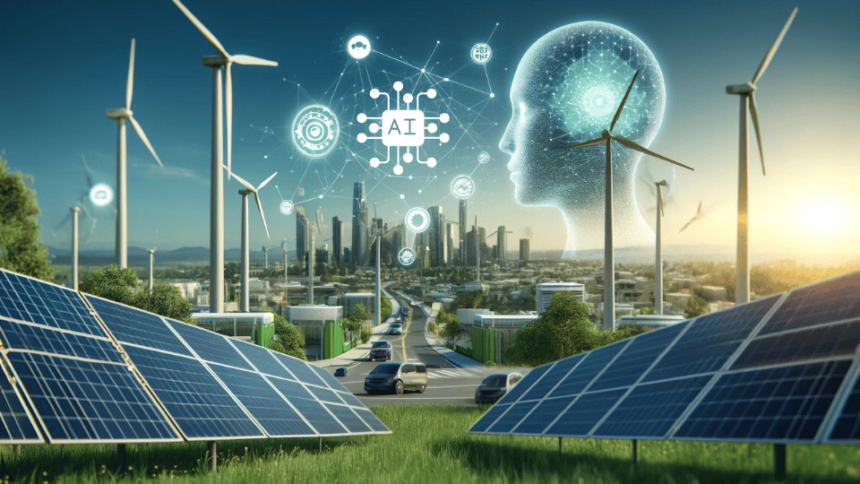The global energy landscape is undergoing a profound transformation, driven by increasing energy demand, the urgency for sustainable practices, and advancements in artificial intelligence (AI). According to the report “Powering Possible,” AI is positioned as a critical technology capable of reshaping energy systems while fostering economic growth and environmental sustainability. This intersection of AI and energy technology offers new strategies to meet ambitious global sustainability targets and address resource challenges.
The Current Global Energy Landscape
Over the past four decades, advancements in energy systems have significantly contributed to global socioeconomic progress, lifting over a billion people out of poverty and increasing literacy rates. Despite this progress, nearly 750 million people, mostly in the Global South, still lack access to electricity. The energy sector remains a significant contributor to emissions, and AI’s potential to optimize energy systems is seen as a pathway toward bridging this energy access gap while mitigating environmental impacts.
AI as a Catalyst for Sustainable Energy Transition
The COP28 UAE Consensus, a critical sustainability framework established in Dubai, aims to triple renewable energy capacity and double energy efficiency by 2030. AI plays a pivotal role in achieving these targets through predictive analytics, grid optimization, and streamlined energy management. According to the International Energy Agency (IEA), global electricity demand due to AI applications could reach 73 TWh by 2026, a dramatic increase from 5 TWh in 2022. This demand surge reflects AI’s growing importance in energy systems, as well as the need for energy-efficient AI infrastructures.
To support this goal, two-thirds of EMDC (Emerging Market and Developing Countries) leaders believe that AI can enhance energy efficiency throughout the energy value chain. The figure below shows that 66% of respondents from the Global South see AI as a key enabler for optimizing efficiency from energy generation to end-use. Additionally, it highlights that the most critical factors for successful AI integration are technological infrastructure (25%) and talent and training (22%).

Enhancing Infrastructure for AI in Energy
Data centers are vital infrastructure for AI operations, yet their energy demands pose challenges. For instance, data centers accounted for 4% of the U.S. national electricity demand in 2022, projected to rise to nearly 6% by 2026. Regions with high data center concentration, such as the European Union, are expected to experience similar trends, with data center electricity demand forecasted to grow 9% annually by 2026.
A figure illustrating AI and data center energy demand projections emphasizes this rapid growth, showing the anticipated increase from 1.1% of global electricity demand in 2022 to around 9% by 2026 for AI-driven applications.
.png)
To address these challenges, energy providers are expanding grid capacity. American Electric Power plans to add 20 GW over the next decade, with 15 GW allocated to support data centers. Additionally, partnerships between technology companies and energy providers, such as those for geothermal and nuclear energy solutions, are facilitating sustainable energy supplies essential for data-intensive AI applications.
Key Recommendations for Sustainable AI Integration in Energy
The report emphasizes the importance of infrastructure and policy development to harness AI’s potential in the energy sector. The following priority areas are highlighted:
- Grid Capacity Expansion: To meet the demand surge, especially from data centers and AI infrastructure, robust grid capacity expansion is essential.
- Promotion of Carbon-Free Energy Sources: Collaborations for geothermal, nuclear, and solar energy are needed to support a carbon-neutral energy infrastructure.
- Standardization of Data Protocols: Standardized data formats and interoperability frameworks are crucial for smooth AI integration, supporting seamless communication across energy systems and devices.
AI’s Impact on Job Creation and Economic Development
The adoption of AI is also set to create significant economic benefits. An increase in direct and indirect job creation is anticipated, especially in the Global South, which is expected to account for nearly 80% of the new electricity demand by 2050. This growth provides a unique opportunity for emerging economies to lead in AI-driven energy solutions, fostering economic development and enhancing workforce capabilities in sustainable technology sectors.
AI’s Potential in Emerging Energy Solutions
AI also supports innovative energy solutions such as carbon capture, utilization, and storage (CCUS). The report indicates that to reach net-zero by 2050, CCUS capacity must grow over 40 times by 2030. AI is pivotal in this field, offering predictive tools for identifying ideal storage sites and optimizing carbon sequestration processes, enabling energy sectors to better manage emissions and integrate with carbon-neutral technologies.
A figure depicting leaders’ confidence in AI’s potential to drive breakthroughs in emerging energy solutions provides a long-term view up to 2050. By 2030, 92% of energy leaders anticipate AI will have a transformational impact, increasing to 97% by 2050. This includes not only energy efficiency but also emerging technologies like small modular reactors (SMRs) and enhanced carbon capture.
.png)
Future Prospects and Challenges
While AI’s integration into the energy sector holds transformative potential, challenges remain. Meeting AI-driven energy demands sustainably requires continued innovation, energy-efficient algorithms, and robust infrastructure expansion. Additionally, policy frameworks are essential to incentivize renewable energy sources and R&D in AI to address environmental concerns alongside growth.
The “Powering Possible” report makes it clear that coordinated efforts across public and private sectors are needed to realize AI’s potential in energy systems. With focused investments, collaborative partnerships, and strategic policies, AI-driven solutions can lead to a balanced, sustainable energy ecosystem that supports both economic growth and environmental stewardship.
For readers interested in a deeper exploration of these findings, the full report “Powering Possible”





